文字サイズ


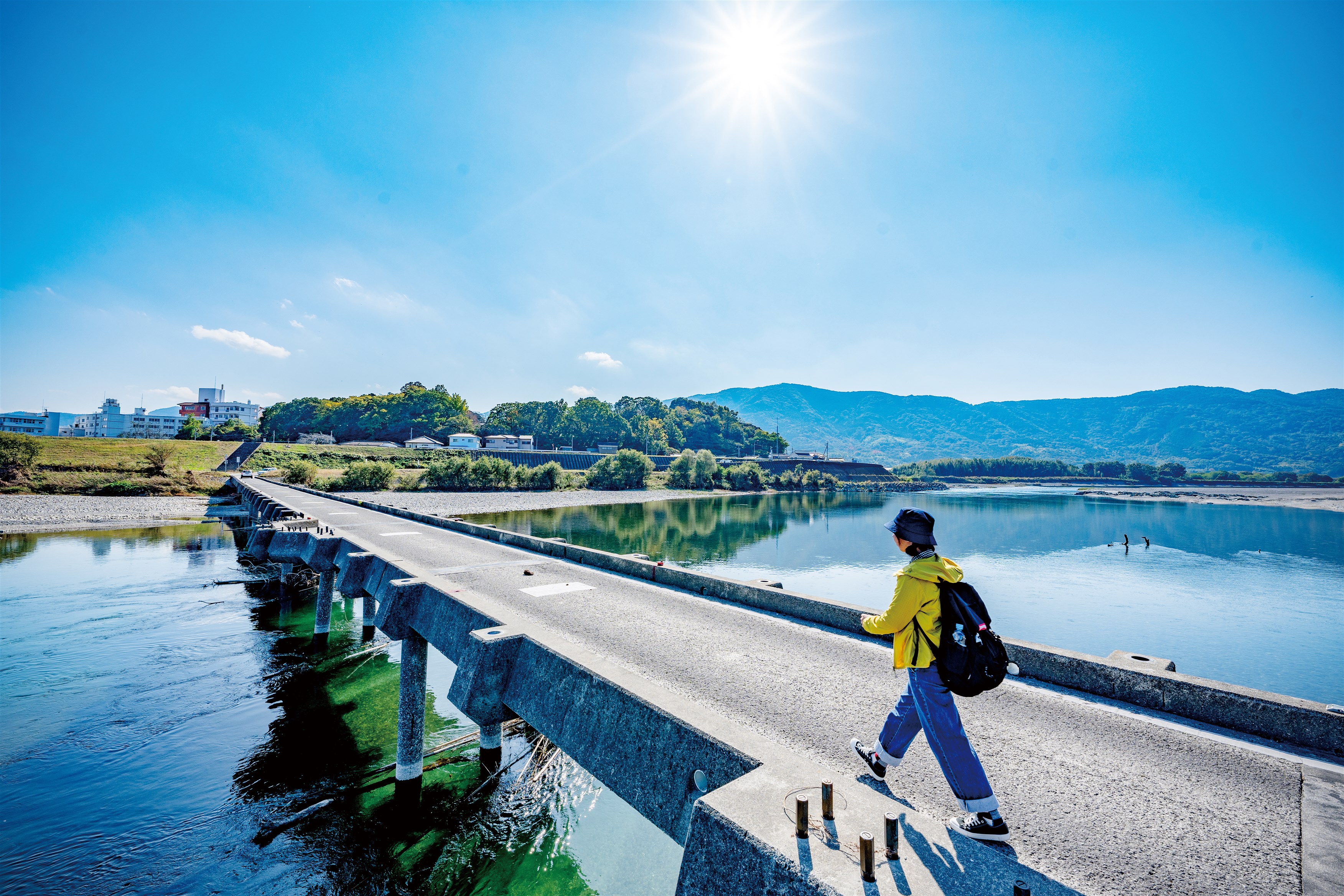
The Kawashimabashi Submersible Bridgehas a lot of traffic because it is an important road in the lives of the local people. Some people enjoy the view of the river from the middle of the bridge.
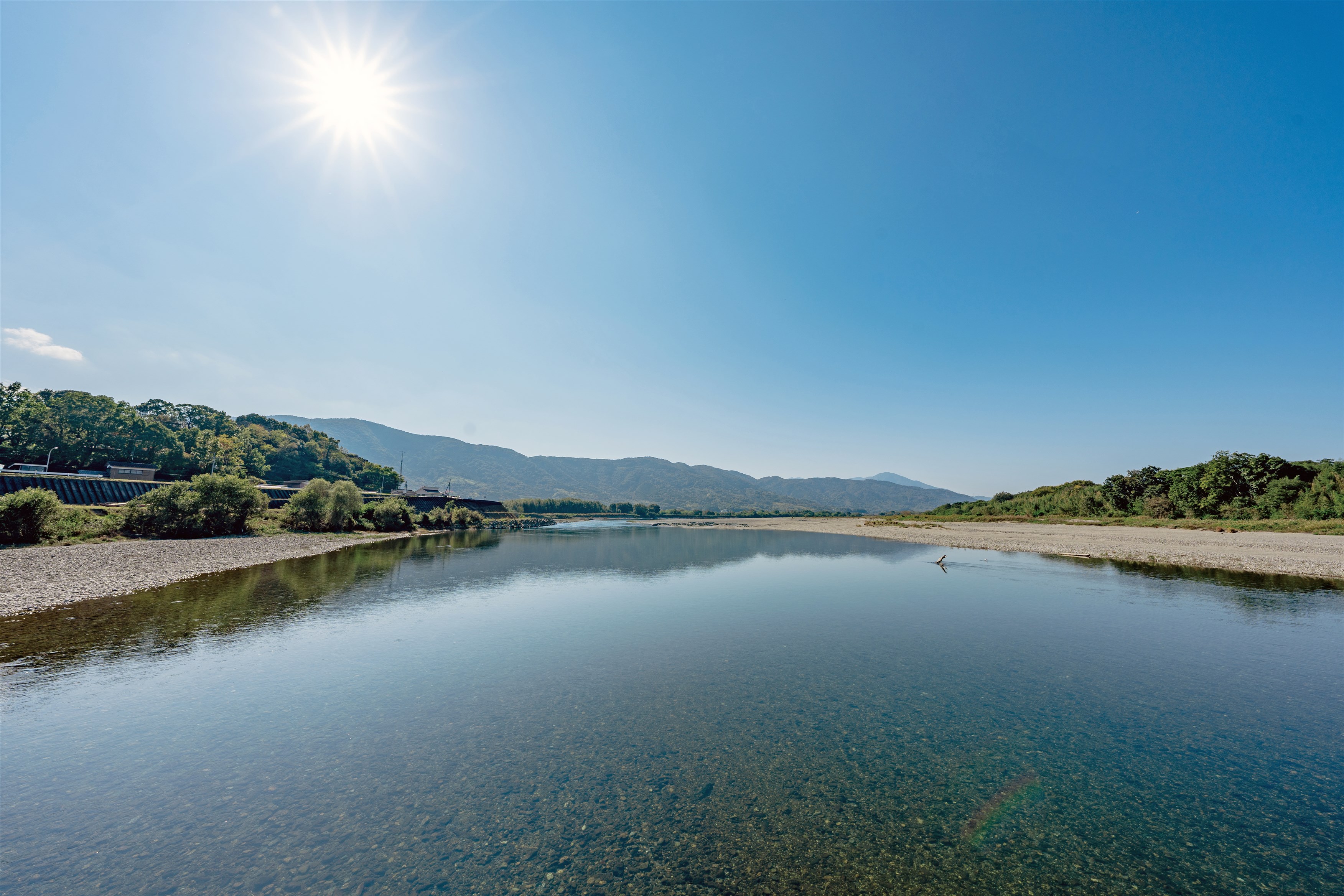
The Yoshinogawa River, also known as Shikoku Saburō,is so clear that stones on the river bottom can be seen.
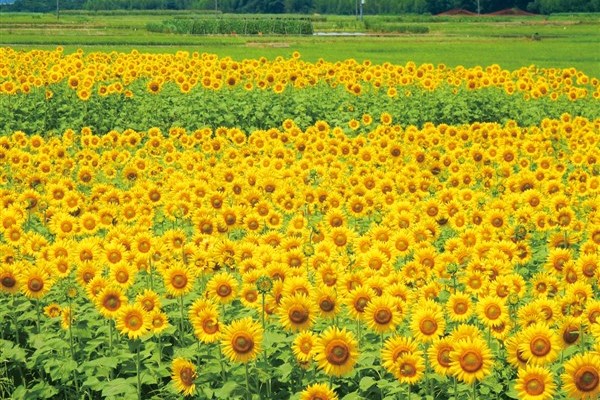
Zennyuji Island (Awajima) July is the recommended month to visit the area as sunflowers will be in full bloom.
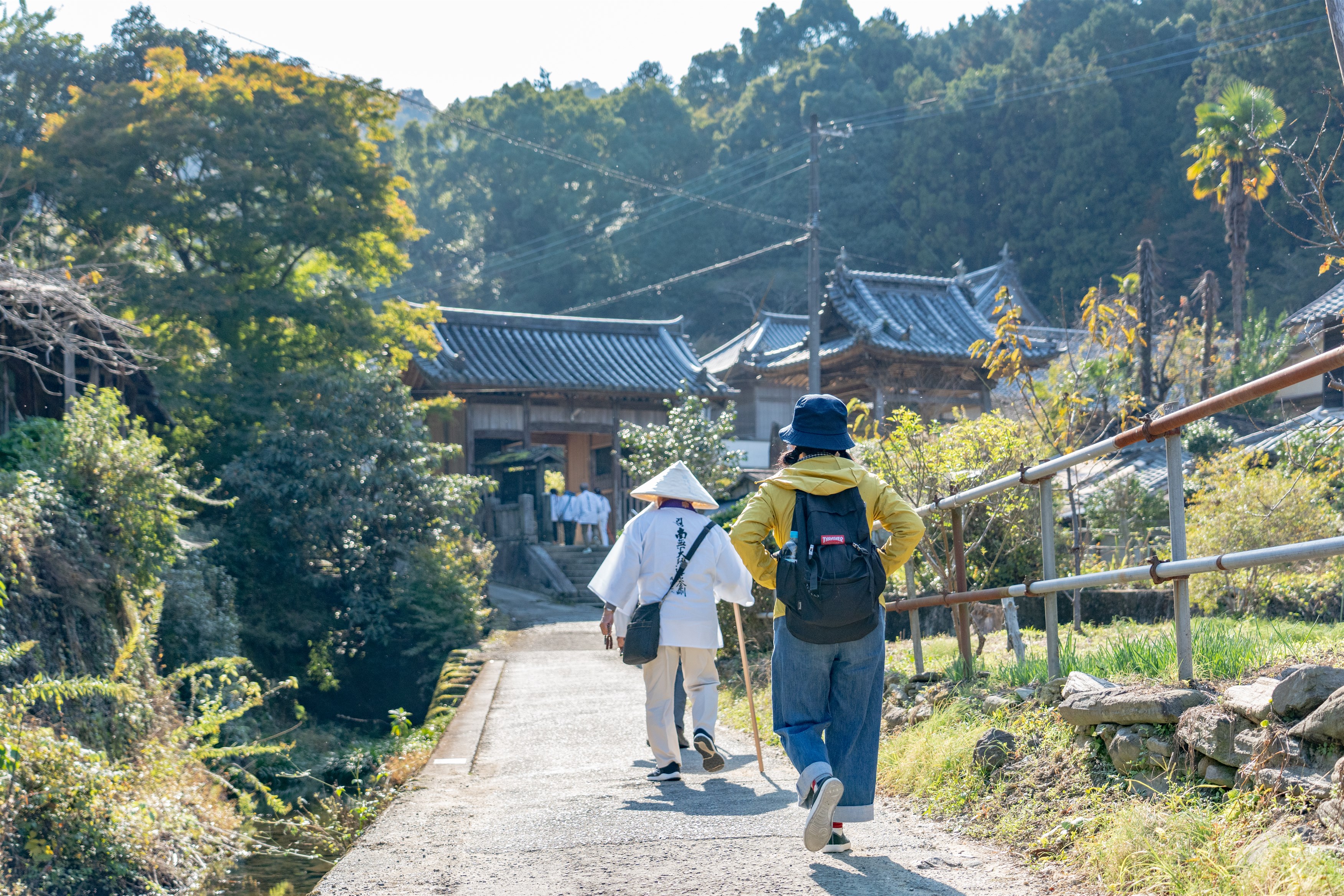
The statue of the main deity, Yakushi Nyorai,at Fujiidera Temple has been designated as an National Important Cultural Property.
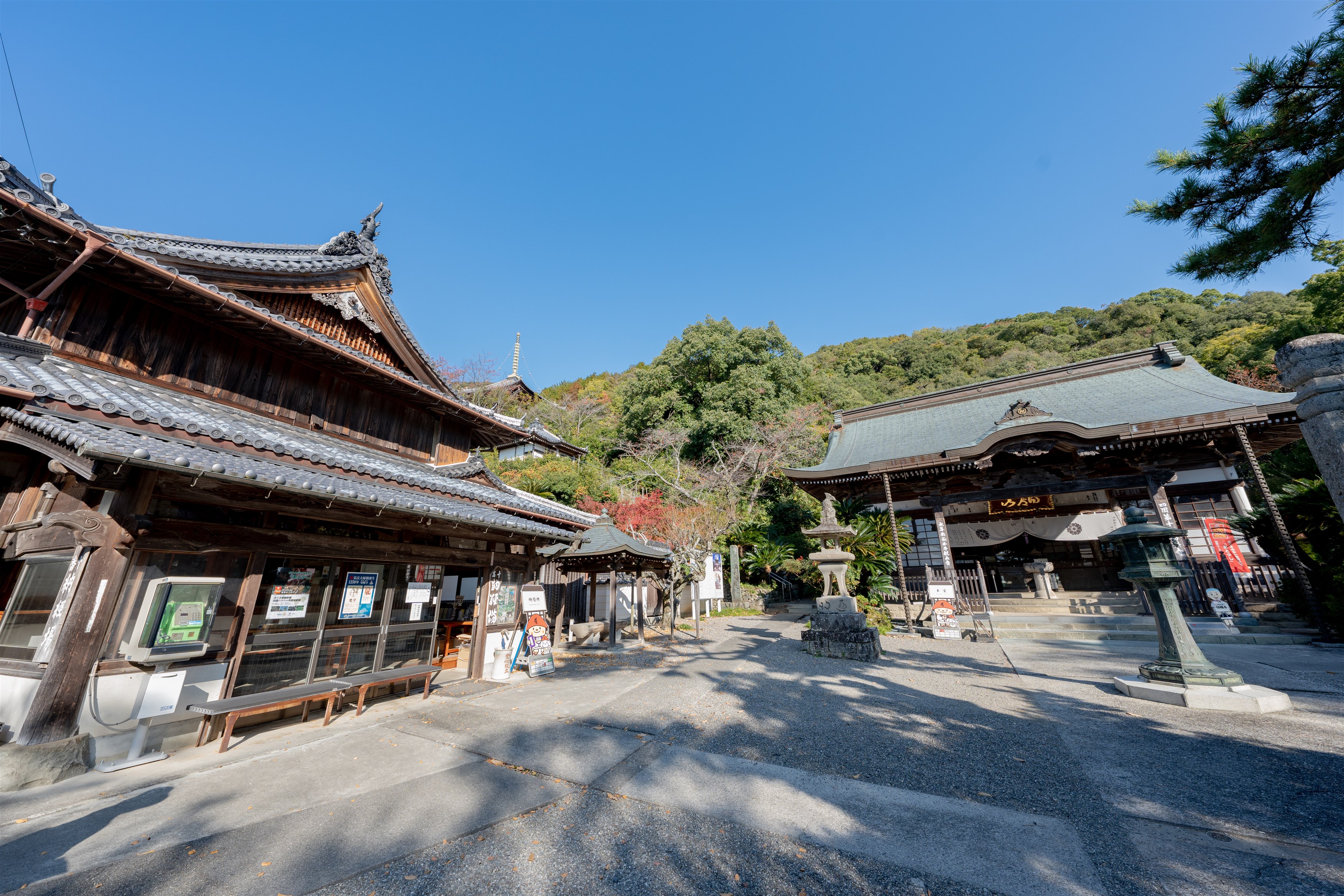
The tenth temple, Kirihtataji. Located halfway up Mt. Kirihata, the two-story pagoda shows the location of the temple. This pagoda, said to be one of the three most famous in Japan, was donated by Tokugawa Hidetada (1581-1632) to Sumiyoshi Shrine in Sakai, Osaka, but was moved here in 1873.
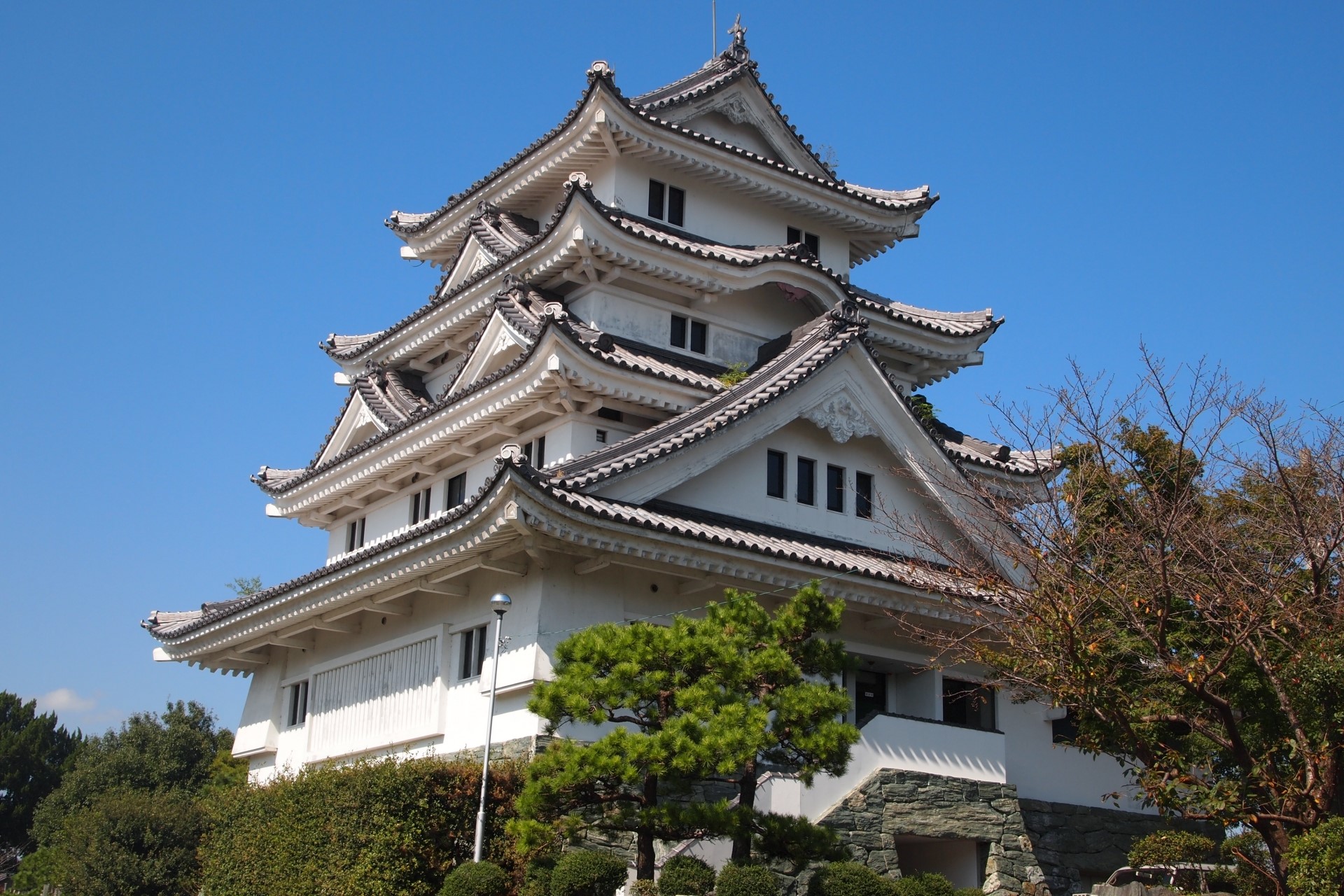
Kawashima Castle was built in 1585 as one of the nine castles of Awa (present-day Tokushima prefecture), but it was abandoned in 1615 because of the Tokugawa Shogunate's order that there be only one castle in each area.
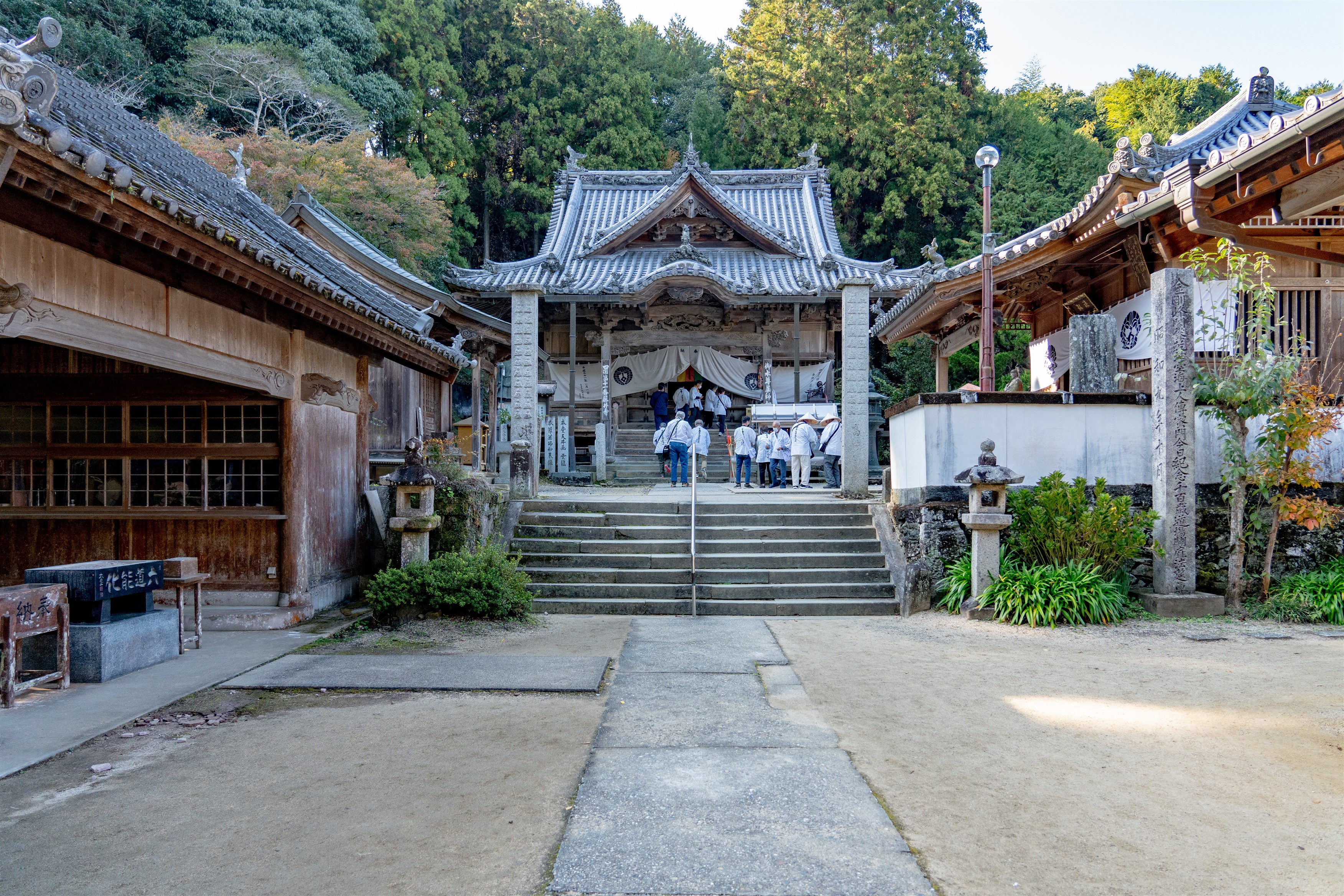
Fujiidera temple. The temple takes its name from the wisteria (fuji) that grow on trellises from the main hall to the temple office. You can see a centuries-old wisteria tree on the temple grounds and the temple is also famous for its cherry blossoms and autumn foliage.
The route descends from Kirihataji Temple, which is lined with shops selling pilgrim goods and Buddhist-related items, but soon instead of houses there are fields all around you. In the distance are the mountains of the Mt. Tsurugi range, the most beautiful of which is Mt. Kōtsu (1,133 m). Passing through the rice fields, you come to the banks of theYoshinogawa River and reach Zennyūji Island, a huge triangular island so vast that you forget it is in the middle of the river. The view of the Yoshinogawa River from Kawashimabashi Submersible Bridge, a submersible bridge that crosses to Kawashima, Yoshinogawa City, is very beautiful and captivating. Beyond the bridge is a replica of the castle tower of Kawashima Castle, built by a powerful family during the Warring States Period(1467-1573), and a park of historical sites. The destination is Fujiidera Temple, the 11th temple on the Shikoku Pilgrimage route, famous for its wisteria said to have been planted by Kōbō Daishi.
Kirihataji Temple ~ Yoshinogawa River Ōnoshimabashi Submersible Bridge ~ Yoshinogawa River Kawashimabashi Submersible Bridge ~ Kawashima Park ~ Tokushima Hospital ~ Fujiidera Temple
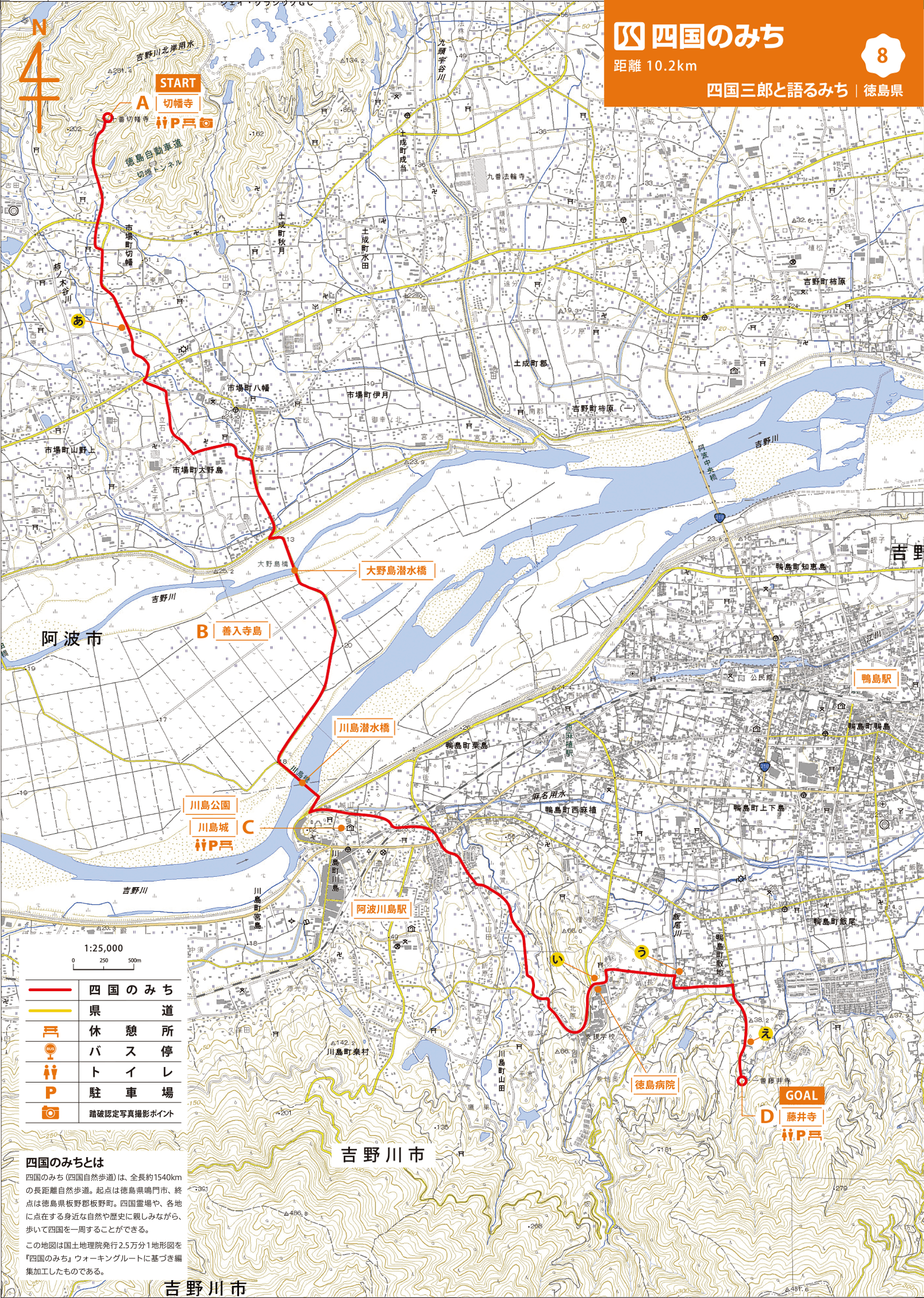
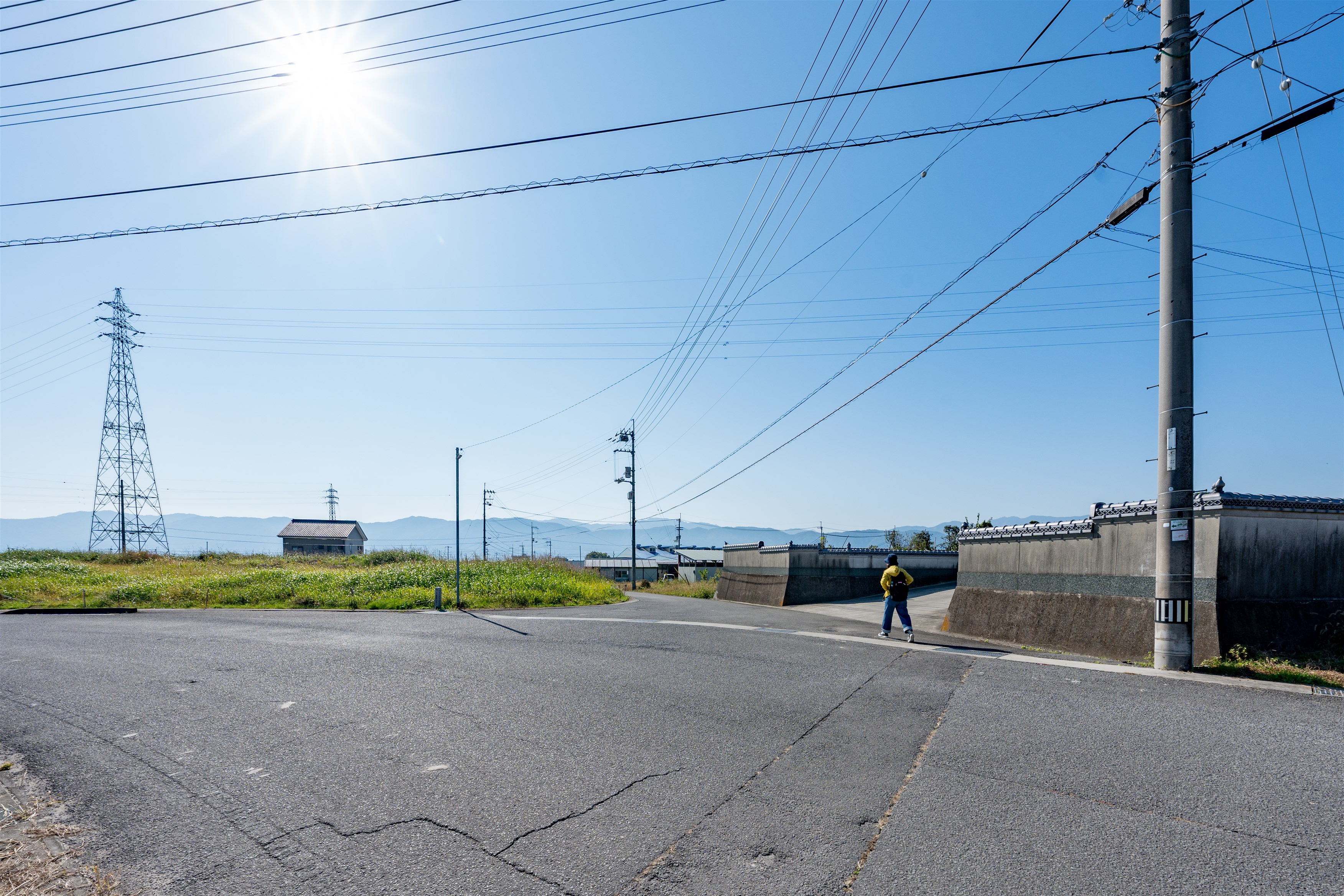
MAP【A】No sign, but turn right.
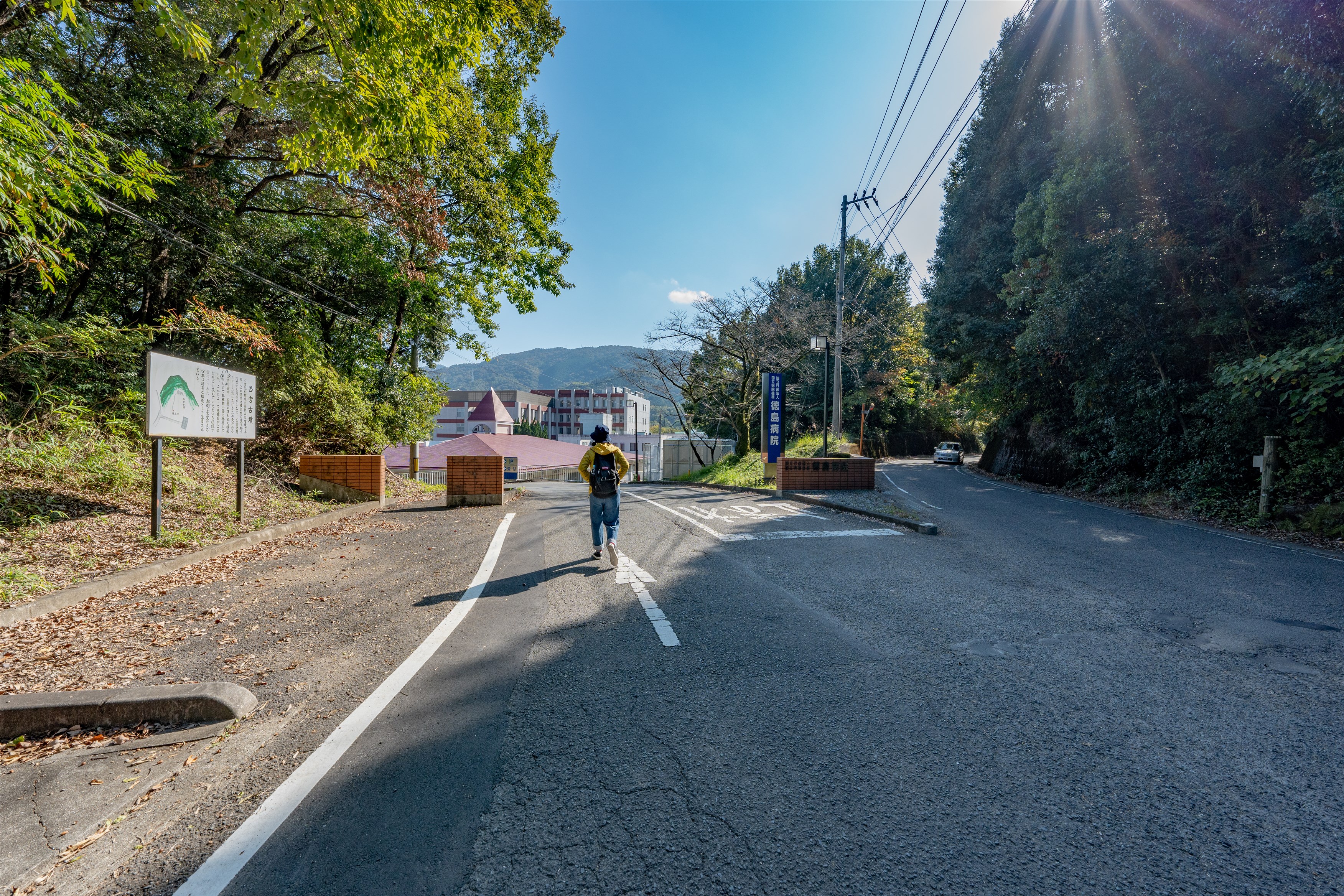
MAP【I】Take a right turn and enter the path at Tokushima Hospital.
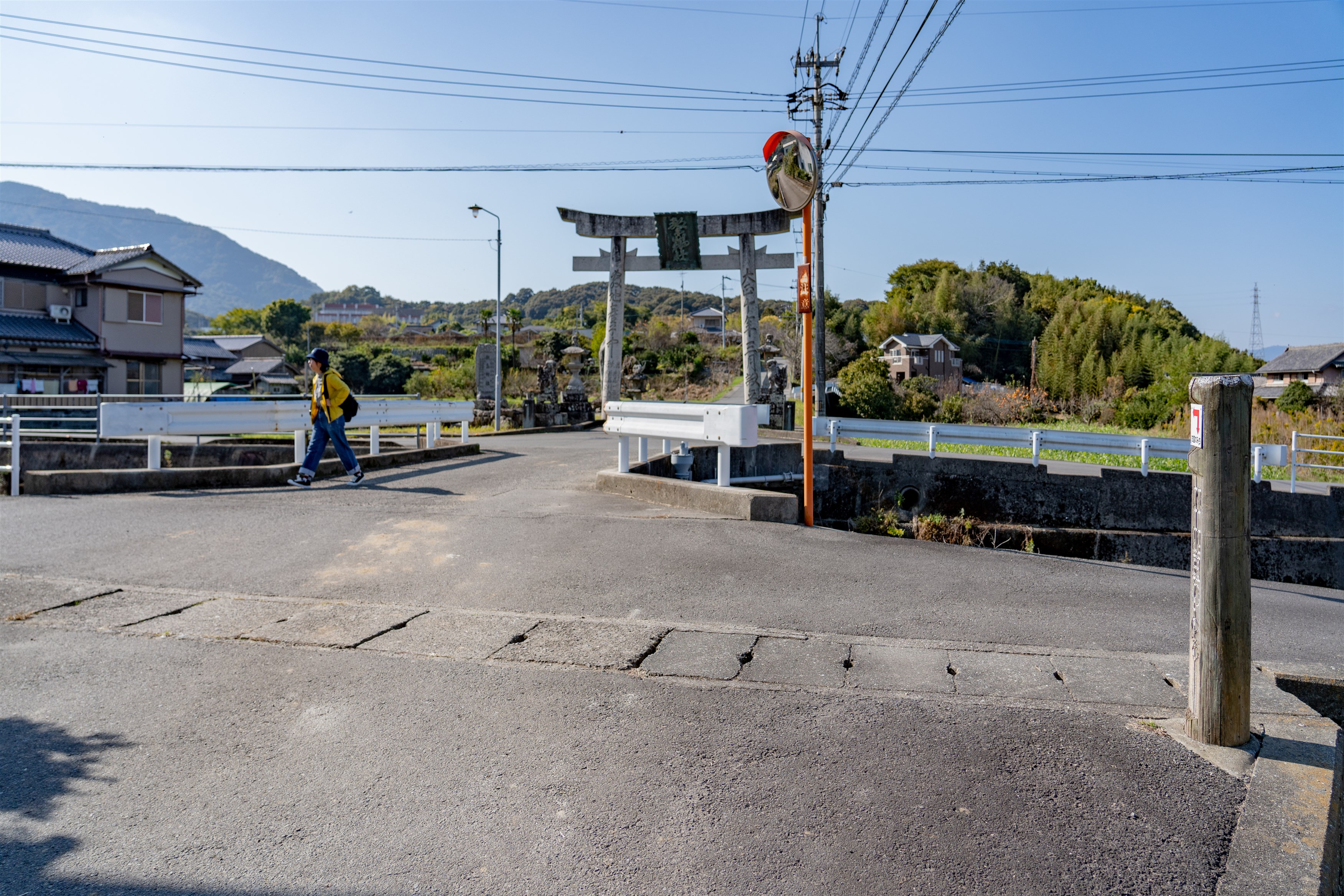
MAP 【U】 Go over the small bridge and walk along the river.
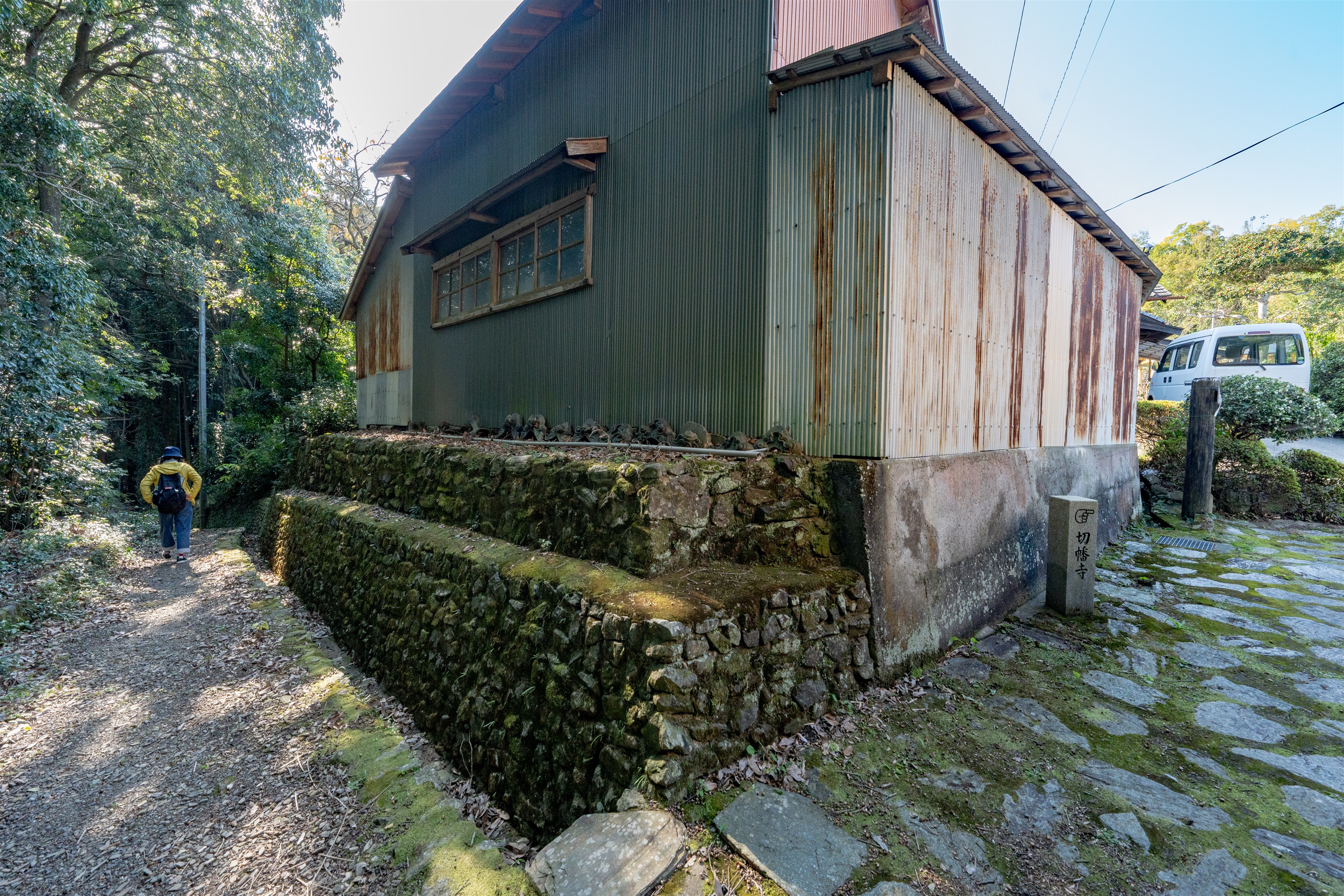
MAP【E】Take the narrow path between houses.
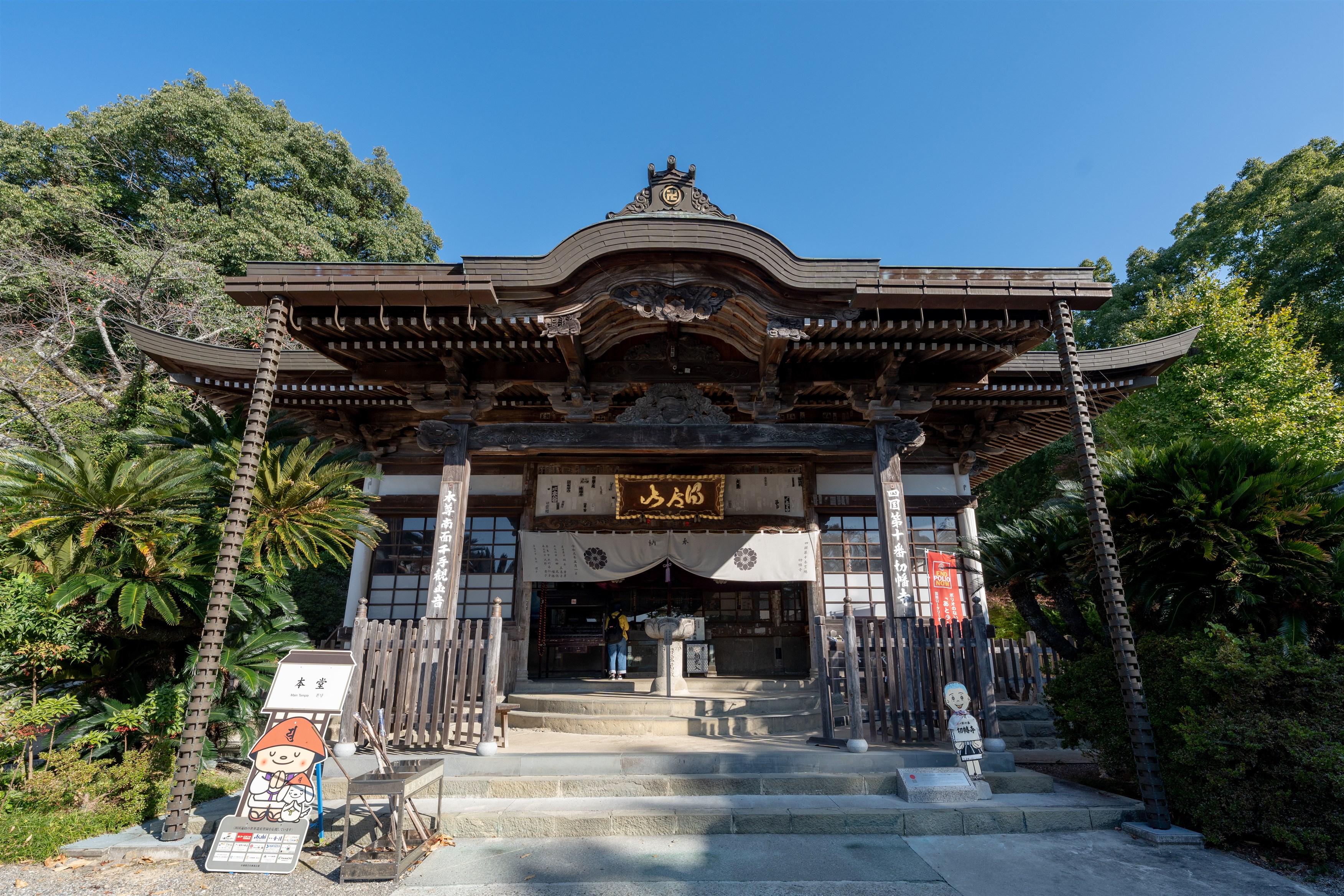
It is good to aim to participate in the "Following the Footsteps of Kūkai Iyashi no Michi Walk " event held every May. The flatland course takes the same route and includes a visit to the Himawari Agricultural Market. On the way back, a bus will take you to Kirihataji temple. (*Inquire at the Yoshinogawa City Commerce, Industry, and Tourism Division for details.)
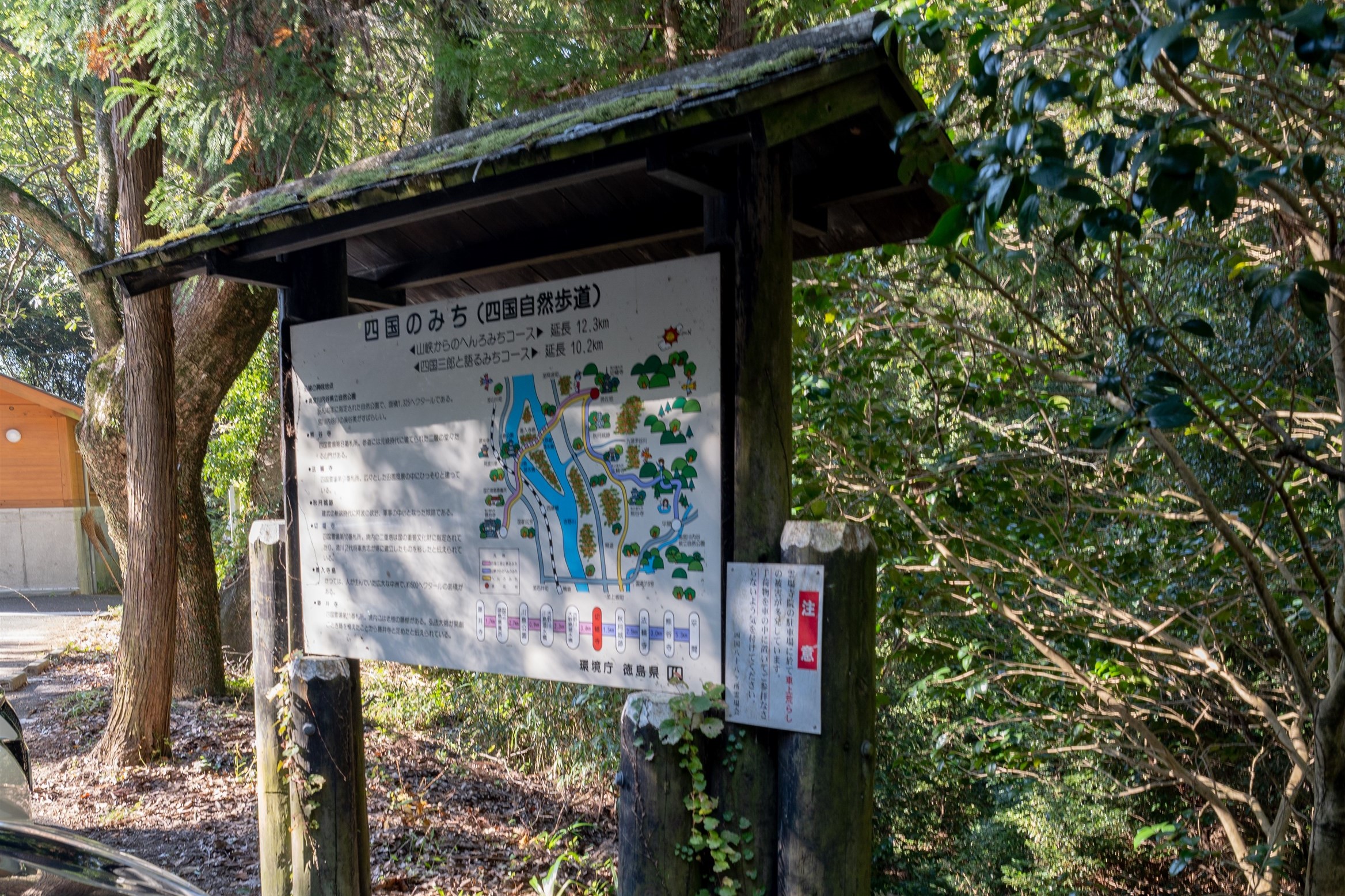
Sign [No. 372] at Kirihataji temple
Those wishing to receive a certificate of completion must take a photograph of oneself at the defined photo points on each course.
To Kirihataji temple via Prefectural Road No. 139 and No. 12
-
◎START
Railway --
Bus --
◎GOAL
Railway –
Bus: 30-minute walk from "Kamojima" on the Tokushima bus line.